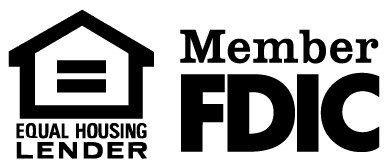When you’re looking to secure a mortgage, understanding the three essential steps can make the process far less intimidating. First, you’ll need to assess your financial health by checking your credit score and calculating your debt-to-income ratio, while also saving for a down payment. Then, explore the various mortgage options available, such as fixed-rate and adjustable-rate mortgages, to determine what aligns with your financial goals. Finally, applying for pre-approval by gathering the necessary documents and submitting them to your chosen lender will enhance your credibility. Wondering how to navigate each step effectively? Let’s break it down.
Assess Financial Health
Securing a mortgage starts with evaluating your financial health.
Begin by checking your credit score, as lenders use it to gauge your reliability. Scores above 700 generally qualify for better rates. If your score needs improvement, focus on paying down debts and making timely payments.
Next, assess your debt-to-income ratio (DTI). Lenders prefer a DTI below 36%, meaning your monthly debt should be less than 36% of your gross monthly income.
Calculate this by adding up monthly debt payments and dividing by your gross income. Reducing your DTI can involve paying off some debts or increasing your income.
Your savings also play a significant role. Lenders like to see you have enough savings for a down payment, usually 20% of the home’s price, to avoid private mortgage insurance (PMI).
Additionally, having an emergency fund to cover three to six months of expenses is essential.
Explore Mortgage Options
Once you’ve assessed your financial health, it’s time to explore mortgage options. Start by understanding the different types of mortgages available. Fixed-rate mortgages offer consistent monthly payments and are great for long-term planning.
Adjustable-rate mortgages (ARMs) have interest rates that change over time, which can be beneficial if you expect rates to drop or plan to move before the rate adjusts.
Next, consider government-backed loans. FHA loans are ideal if you have a lower credit score or a smaller down payment. VA loans are excellent if you’re a veteran, offering competitive rates and no down payment.
USDA loans are perfect for rural property buyers, providing low rates and zero down payment.
Don’t forget to compare lenders. Different banks and credit unions offer varying rates and terms. Use online tools to get an idea of what each lender offers, but also speak directly with them to understand the finer details.
Lastly, think about the term length. A 30-year mortgage means lower monthly payments but more interest over time. A 15-year mortgage has higher payments but saves you money on interest.
Choose what aligns best with your financial goals and comfort level.
Apply for Pre-Approval
With a clear understanding of your mortgage options, the next step is to apply for pre-approval. This vital step shows sellers you’re a serious buyer and provides a clear picture of what you can afford.
Start by gathering essential documents like pay stubs, tax returns, and bank statements. These documents will help the lender assess your financial situation.
Once you’ve gathered everything, choose a lender and submit your application. The lender will review your credit score, income, and other financial details to determine how much they’re willing to lend you. This process usually takes a few days, but some lenders offer instant pre-approval.
After approval, you’ll receive a pre-approval letter stating the loan amount you qualify for. This letter is a powerful tool during your house hunt, giving you an edge in competitive markets.
It also helps you stay within budget, preventing you from falling in love with homes outside your price range.
Frequently Asked Questions
How Long Does the Mortgage Approval Process Typically Take?
You’re probably wondering how long the mortgage approval process typically takes.
On average, it takes about 30 to 45 days from application to approval. However, it can vary based on factors like your financial situation, the lender’s efficiency, and how quickly you provide necessary documents.
Some approvals might happen faster, within a couple of weeks, while others could take longer if there are complications or additional checks needed.
What Credit Score Do I Need to Qualify for a Mortgage?
To qualify for a mortgage, you typically need a credit score of at least 620.
However, higher scores, like 740 or above, can get you better interest rates and terms.
If your score is lower, don’t worry—you might still qualify for certain programs, but expect higher rates.
It’s a good idea to check your credit report and work on improving your score before applying.
Can I Get a Mortgage With a Low Down Payment?
Yes, you can get a mortgage with a low down payment. Many lenders offer options that require as little as 3% down.
Programs like FHA loans allow for low down payments and are designed to help first-time buyers.
VA and USDA loans even offer zero down payment options if you qualify.
Make sure to check the specific requirements and benefits for each program to find the best fit for you.
What Are the Closing Costs Involved in Securing a Mortgage?
When you’re securing a mortgage, you’ll encounter several closing costs. These include loan origination fees, appraisal fees, title insurance, and attorney fees.
You might also see costs for a credit report, home inspection, and property taxes.
It’s vital to review the Loan Estimate provided by your lender to understand all potential costs.
How Does Refinancing a Mortgage Work?
Refinancing a mortgage involves replacing your existing loan with a new one, usually to get better terms or a lower interest rate.
You apply for a new mortgage, and once approved, it pays off your old loan. You’ll then start making payments on the new mortgage.
It’s a way to save money or change the loan’s duration, but be mindful of closing costs and fees.
Conclusion
By following these three essential steps, you’ll be well on your way to securing a mortgage with confidence. Start by evaluating your financial health, then explore different mortgage options to find the best fit. Finally, apply for pre-approval to strengthen your position and keep your budget in check. With a bit of preparation, you’ll navigate the mortgage process smoothly and move closer to owning your dream home. Now, take the first step and get started!




